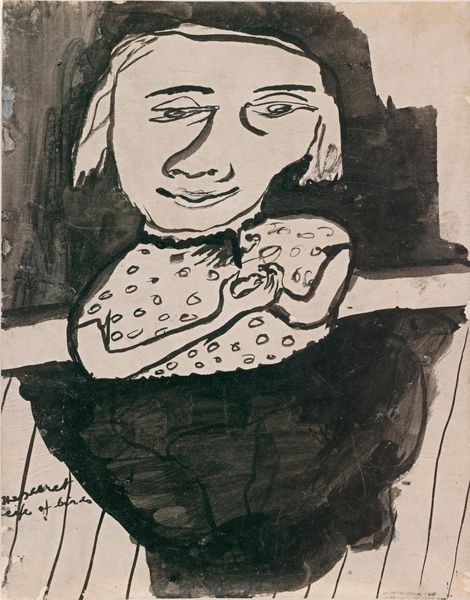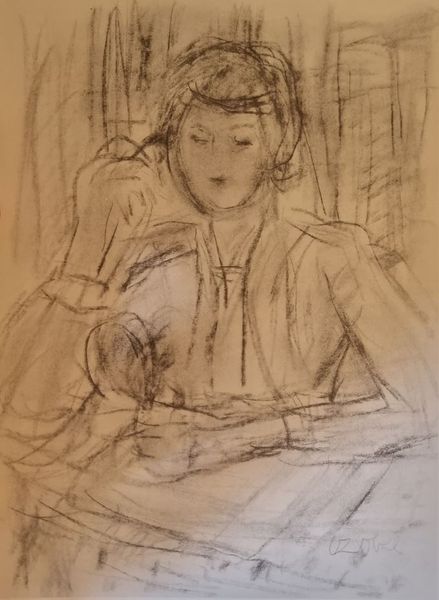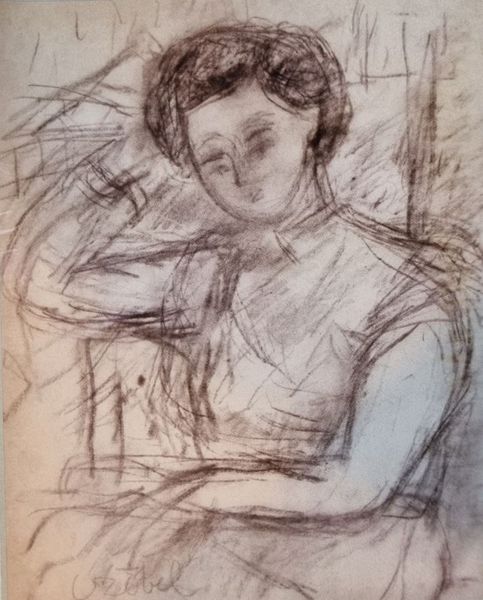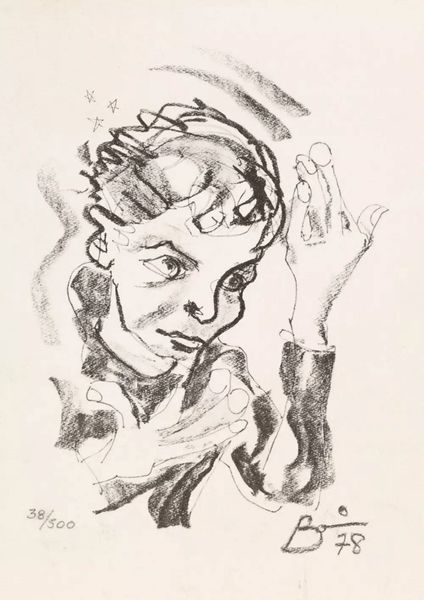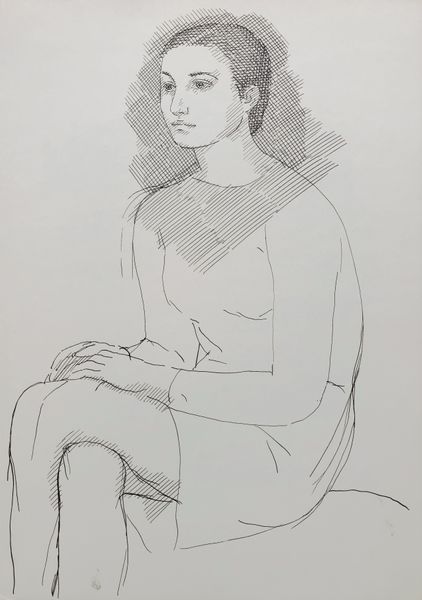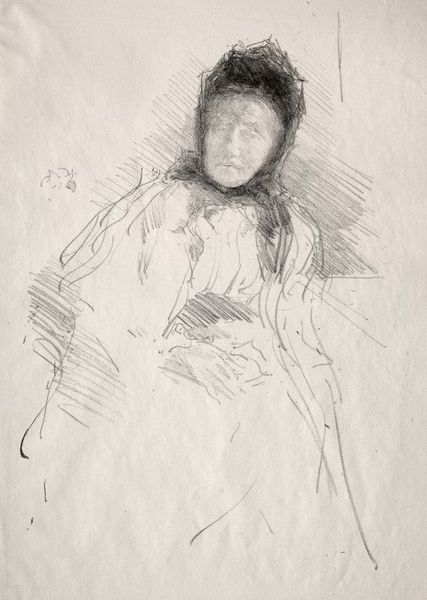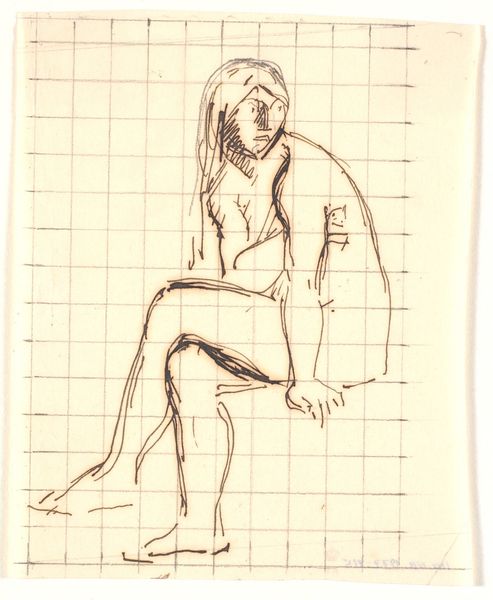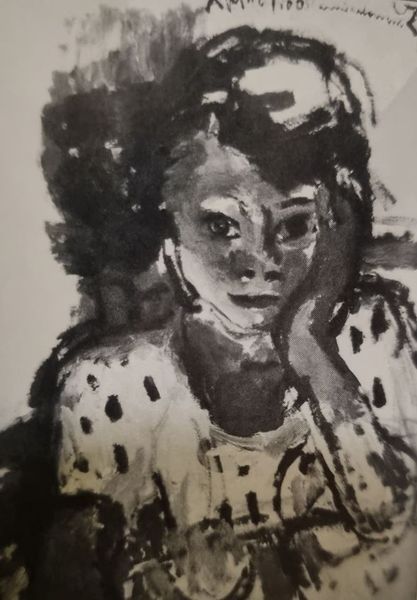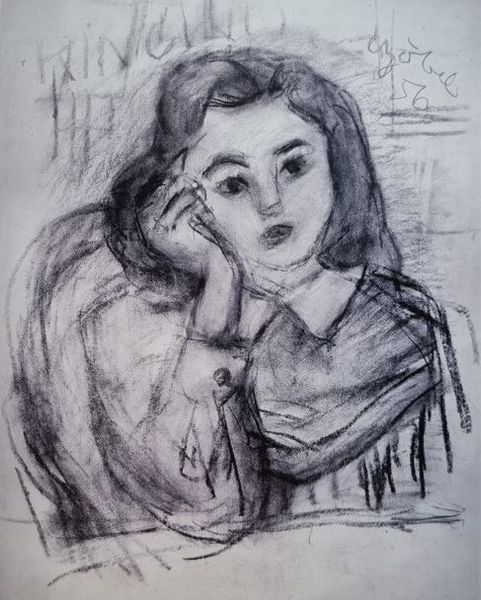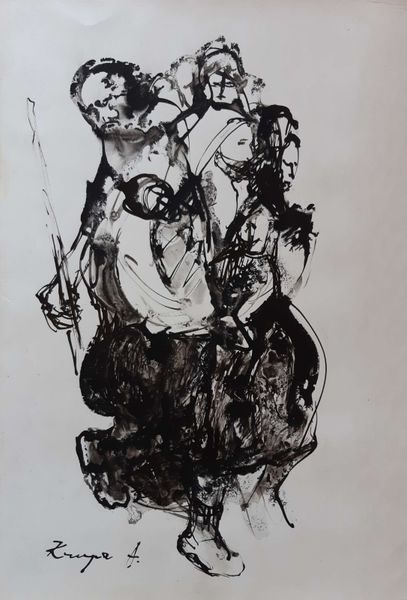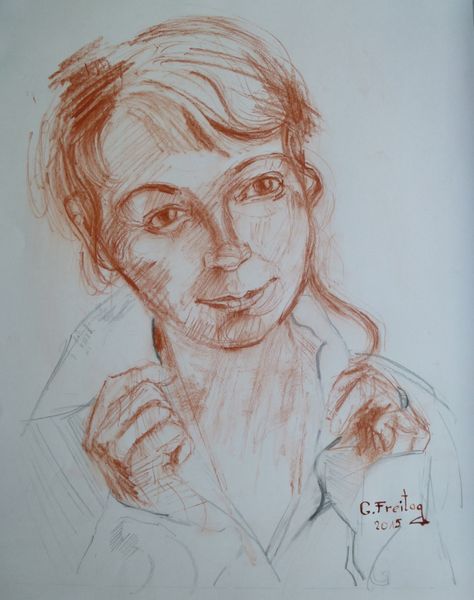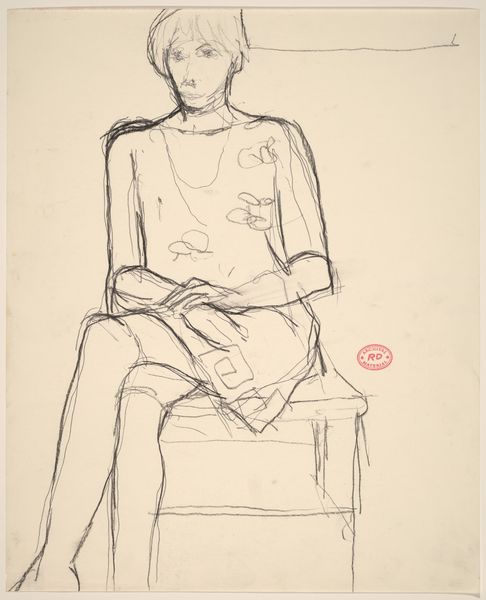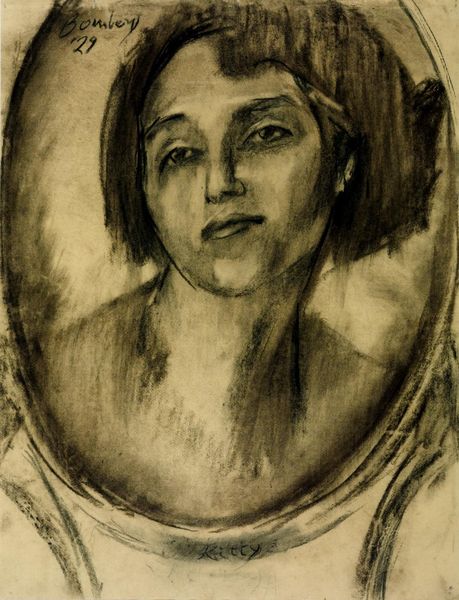
drawing, pen
#
portrait
#
drawing
#
pencil sketch
#
german-expressionism
#
figuration
#
pen-ink sketch
#
expressionism
#
pen
#
portrait drawing
Copyright: Public domain US
Curator: Let's take a look at this compelling piece by Béla Czóbel, entitled "Czóbel Béla Kézimunkázó Nő", or "Béla Czóbel Woman Embroidering," completed in 1922. It appears to be executed in pen and ink. Editor: My initial impression is one of introspection. The subject's downward gaze and the delicate handwork suggest a quiet, personal moment— almost meditative, despite the restless lines. Curator: Precisely. Notice how Czóbel employs dense hatching to model the form and create areas of shadow. This technique not only defines the volumes, like the soft curve of her cheek, but also imbues the sketch with a dynamic energy characteristic of German Expressionism. Editor: And I can't help but think about the societal position of women at this time. Embroidery, a domestic craft, was often relegated to the female sphere. Is Czóbel simply depicting a commonplace scene, or is he subtly commenting on the constraints placed upon women's creativity during the interwar period? The visible seams in her handiwork become a powerful metaphor of female subjectivity. Curator: An interesting point. While social commentary is certainly a valid lens, consider also how the composition guides the viewer's eye. The strong diagonal of her body leads us towards the focal point – her hands – masterfully rendered with confident strokes. Observe how these lines, these marks, build the very form of the artwork, both figure and ground collapsing into an unified design. Editor: Yes, the integration of figure and ground definitely heightens the sense of confinement, as does her downturned gaze, which shields her inner life from our scrutiny. Considering that Czóbel belonged to "The Eight," a group that challenged artistic norms and promoted social progress, his focus on craft raises important questions. Perhaps embroidery for Czóbel, in itself, becomes a form of subversive action within the confines of his subject’s lived conditions? Curator: Whether intentional or not, such readings add layers of complexity. Focusing strictly on the formal qualities though, we recognize that each rapidly placed mark contributes to the overall expressive intensity; notice the bold contour outlining her form that gives definition to this otherwise very dynamic interplay between tonal values, dark and light... Editor: Agreed. Ultimately, it is in the fusion of line, form, and historical context that this drawing reveals its richness and depth, an important intersection of social narratives expressed through graphic qualities. Curator: It has been enlightening to re-examine this study by Czóbel from both a formalist as well as an activist position! Editor: Indeed, art provides infinite opportunities to reassess narratives of the self and social life.
Comments
No comments
Be the first to comment and join the conversation on the ultimate creative platform.
